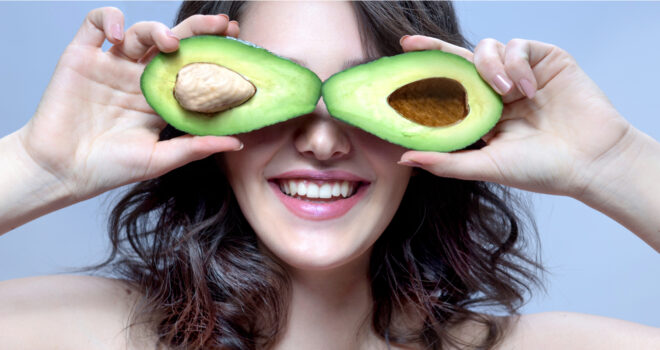People, just like plants, need water to flourish. A tomato plant probably wouldn’t prosper without water. The same is true for us, especially our skin. This is another reason to eat vegetables since they contain a lot of water and therefore contribute to hydration from within.
Our skin: a reflection of how hydrated we are
Just like escaroles and carrots tend to dry up and wither with time, our entire bodies slowly become dehydrated as the years go by. A newborn baby’s body is 75% water, but by the time we reach adulthood, that number becomes 60%, and by the time we reach old age, 50%. In other words, the body of a 30-year-old that weighs 110 pounds contains 8 gallons of water, while the body of a 70-year-old who weighs the same amount only contains 6.5 gallons.
Your skin is a sort of reservoir for the water in your body: out of the 8 gallons of water in the body of a 30-year-old woman who weighs 110 pounds, 1.3 gallons are “hidden” in the skin. You can imagine just how much chronic dehydration can affect the skin, just like a fruit that becomes wrinkly. Your skin, which reflects your body’s hydration levels, is one of the first things to suffer if you don’t drink enough water. It becomes coarse, dry, and scaly.
While your whole body needs water, your skin especially needs it to rebuild the reserve of the dermis (the deepest layer of the skin which is made up of 80% water) and to renew the hydrolipidic film at its surface. This film, which is made of fatty materials needed for a good complexion, is the only thing protecting your skin.
The essential steps for keeping your skin moist
First of all, you have to make sure your body gets enough water. Every day, we lose an average of 2.4 quarts of water through transpiration and respiration (since we exhale about one pint of water per day through the moisture in our breath) and in our urine and stool. We have to make sure we counteract these loses. Drinks are our main source of water.
However, our food is another important factor. It provides about 1 quart of water per day, or approximately 40% of what we need. That number is even higher for people who don’t drink much, who often compensate by eating more summer gazpachos, mixed salads, or crunch vegetables. In fact, the best way to improve our hydration is to eat more fruits and vegetables.
The proof is in the numbers
Cucumbers, lettuce, and tomatoes, which are approximately 95% water, provide 95 grams of water for every 100 grams we eat, not to mention all of the vitamins and minerals they provide which can also promote skin health. In other words, a plate with 100 grams of asparagus (93% water) provides almost 0.1 quarts of water. Even avocados, which are often seen as containing a lot of fat, are mostly made up of water (76 grams of water in 100 grams of avocado).
Do you devour Vichy carrots? Well, they are 92% water, or 0.18 quarts, for every 200 grams. Maybe you prefer a fresh salad. In that case, you should know that lettuce (50 g), sliced tomatoes (130 g), diced cucumber (100 g), and a bit of corn (50 g) for color provide almost 0.2 quarts of water. And you weren’t even trying! In short, to have good skin, all you need to do is eat a salad now and then!



 Celery
Celery  Bell pepper
Bell pepper  Vegetable garden: growing red beans
Vegetable garden: growing red beans 









